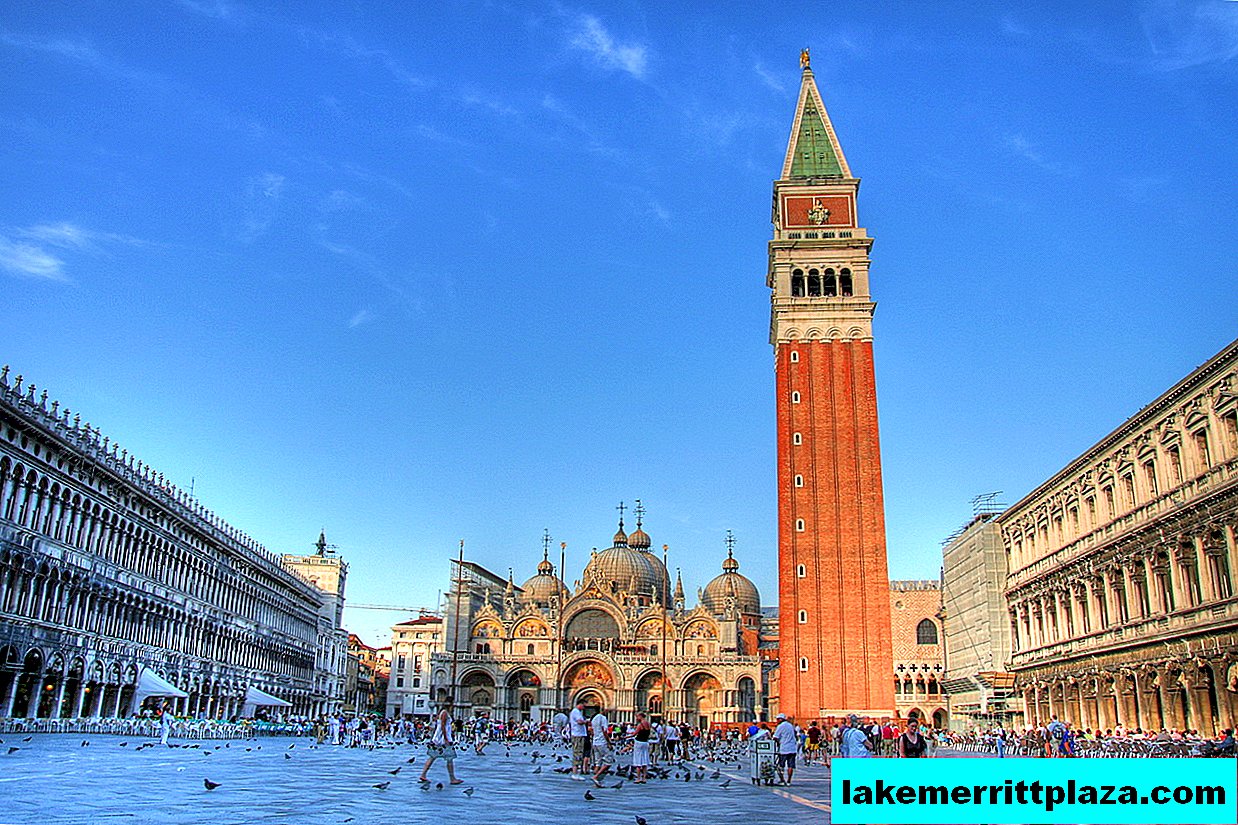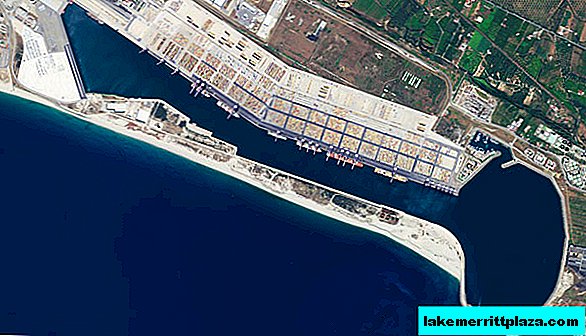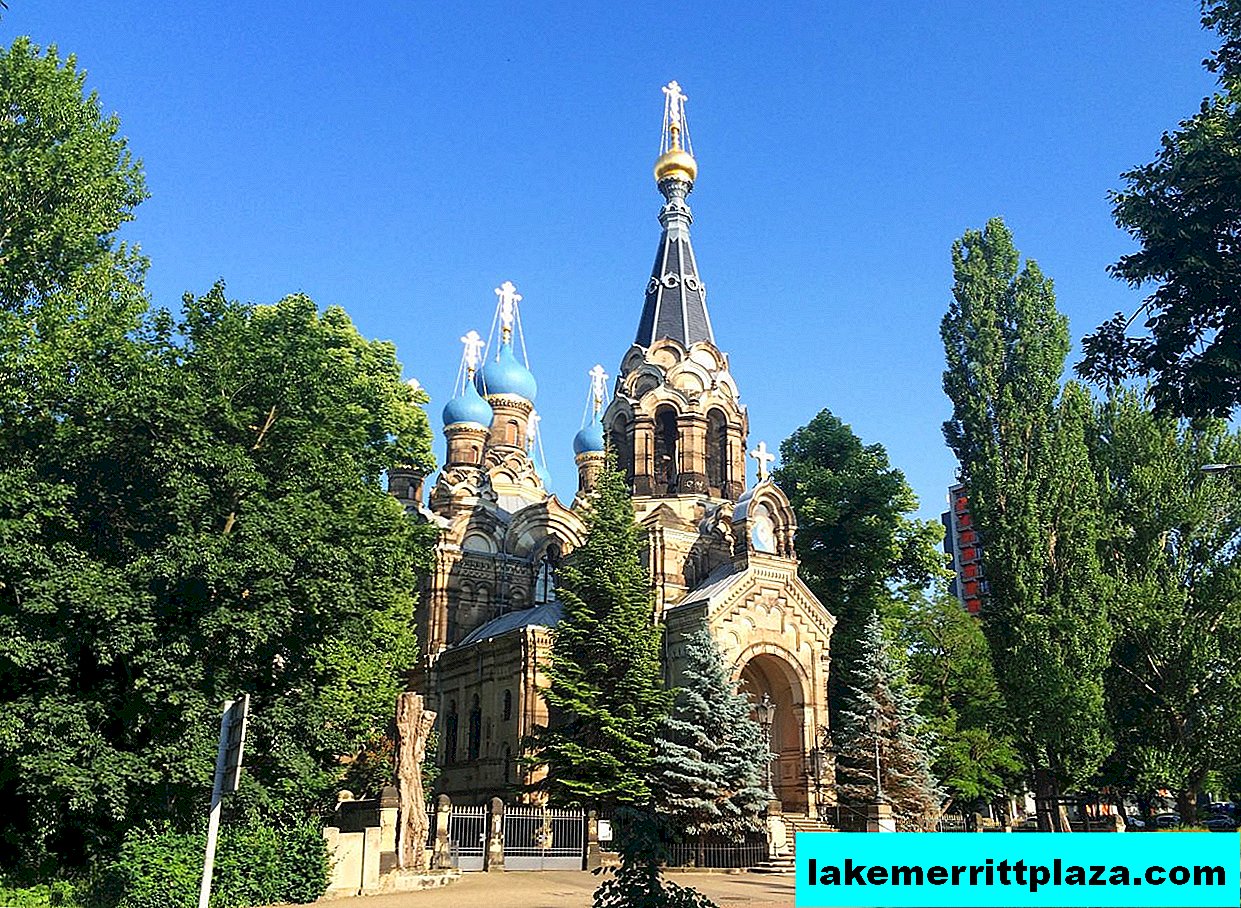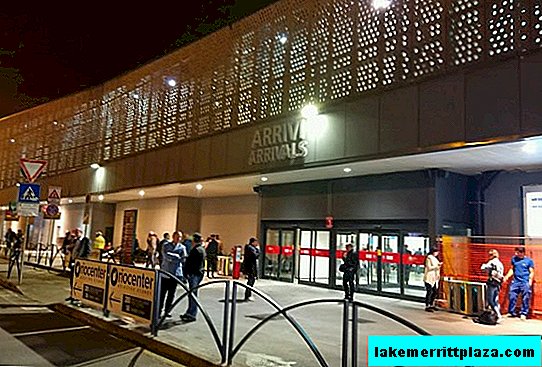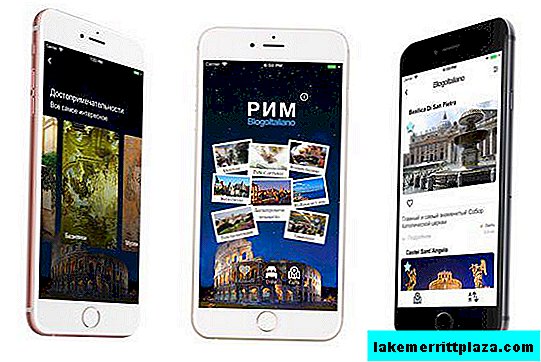Italian wedding photographer Arthur Yakutsevich talks about a walk through the sights of Rome with lovers Sandy and David.
Today I would like to bring to your attention a colorful story with many photographs of Sandy and David. This summer, they arrived in the Italian capital from Toronto a month before their wedding, which they plan to play in their hometown. And this is not surprising, because in recent years, future newlyweds are increasingly going on their honeymoon before a solemn event. It allows them to get a lot of new impressions and escape from the hustle and bustle associated with the organization of the upcoming celebration. As a professional photographer, I made a wonderful photo shoot for them in Rome. The pre-wedding travel photos will be a magnificent decoration for the Sandy and David family photo album.

Everyone who is going on a trip asks the question: "Which city to choose?" There are so many wonderful places on the planet. But, believe me, choosing Rome for your trip, you will not regret it. Once having arrived in this city, I fell in love with it and stayed here for a long time. And it’s not only the excellent cuisine, which I consider one of the best in the world. And not only in an infinite number of unique attractions. And not even in the benevolent and welcoming Italians themselves. And, probably, in the unique atmosphere of this amazing city. It was she who was able to win mine and millions of other hearts.
Rome is undeniably great. And most tourists traveling in Italy, necessarily include it in their route. But do not forget about dozens of other Italian cities, such as Milan, Florence, Verona and Venice. They deserve no less attention than the beautiful Italian capital.
Many of us are often limited in time and money. And so they try to make a trip "at a gallop across Europe" by visiting many cities in a week. Try not to succumb to such temptation. After all, each city has its own history, attractions, unique atmosphere and some features. After spending enough time in the "Eternal City" you can not help but succumb to its charm.

Tourists who come from younger modern ones will especially feel the contrast. That is exactly what Toronto is, native to Sandy and David. Its history totals only about three hundred years, very little in comparison with Rome, whose history began 700 years before our era. Therefore, the future newlyweds and invited their parents on a trip so that they also had the opportunity to appreciate the difference.

First meeting
The place for the first meeting and acquaintance with future newlyweds I chose the Spanish Steps. Couples in love are attracted to this famous Italian attraction as if by a magnet. Sitting on its steps, they like to dream of a happy future and watch how dusk descends on the city. And how many offers of hands and hearts this place has seen!

The Spanish Steps has been deservedly recognized as the most beautiful staircase in Europe. Built more than three centuries ago, it still impresses with its architecture and rather large dimensions. Its uniqueness lies also in the fact that all its steps bend bizarrely, now narrowing, then expanding. Everyone who decides to climb the Pincho hill will have to overcome all 138 steps. And this may not be as simple as it seems at first glance. But those who overcome all difficulties and get to the top will be able to fully enjoy the stunning views of the city.
The Spanish Steps are loved not only by tourists. Connoisseurs of high fashion also do not bypass the famous landmark, sometimes holding shows of their new collections on it. During such shows, the staircase is completely modified, turning into a fantastic work of art.
Meeting at the stairs, we headed to the Trevi Fountain to take a little walk, get to know each other better and outline a plan for a photo shoot for the next two days. Communicating with me, Sandy and David also did not miss the opportunity to take a closer look at the famous fountain and even perform one of the obligatory rituals that all tourists perform - toss a coin.

Despite the relatively small age, the uniqueness of this water source is undeniable. Outwardly, he looks like a huge scene, with the god of the sea in the title role. Neptune rushes in his chariot, which is harnessed by seahorses and mighty newts. However, Neptune is not the only character in this Roman landmark. Among the fountain sculptures, one can notice statues of the goddesses of Health and Abundance, personifying the prosperity of Rome. The architect did not forget about the maiden, who, according to legend, showed the way to the source.
Once upon a time, even during the reign of Agrippa, in the capital of the Roman Empire, there was a need for additional resources of drinking water. To solve this problem, the best legionnaires were sent in search of life-giving moisture. However, for a very long time failure failed. And then one day, when the soldiers were about to return home empty-handed, a girl mysteriously appeared to them and took them to a spring of clean water. That spring was located 20 kilometers from the capital.
It is from him that, according to the ancient aqueduct built before our era, water still falls into Rome. In honor of the mythical virgin, a name was also given to the source - Aqua Virgo, which means Virgo Water. According to legend, the water of this particular source is able to give love and health. In the Roman Empire, all aqueducts had to end with a fountain. And it is the Trevi Fountain that completes the Aqua Virgo aqueduct.
Accordingly, the water in the fountain is considered to be happy. According to the ancient ritual, one who approached him should throw three coins at him with his right hand over his left shoulder. The first coin contributes to the return of Rome, the second - the acquisition of love, and the third coin promises that you will enter into a marriage with your newfound love. On the right side of this antique masterpiece, you can use the so-called tubes of lovers, for those who have already met their soul mate. Drinking water from the tubes at the same time, you will make your marriage indestructible.
Despite the fact that all these stories belong to the category of urban legends, at least one ritual is tried by everyone who comes to a magical source. Today, up to two thousand euros are extracted from the fountain daily. The collected funds are sent to a charity fund. And, perhaps, for someone this money will turn out to be a real miracle.
Photosession (day one)
I decided to spend the first day of the photo shoot at not quite standard Roman sights.

Pinocchio Brand Store Museum in Rome
We all know and love from childhood the hero of the fairy tale "Golden Key" Pinocchio. The great Russian writer A.N. Tolstoy wrote this favorite children's tale. But does everyone know that for the first time the tale of a boy whose nose was lengthened when he started to lie, was born in 1883. The author of a fairy tale called Pinocchio was Carlo Collodi, a famous Italian writer.
The name of the wooden mischievous boy comes from the Latin word pinea, which means pine. After all, according to the fairy tale Pinocchio was made of pine logs. The main goal in the life of Pinocchio was to become a living boy. What happens after a large number of different adventures in which this little prankster always managed to get into. After all, this is a fairy tale, and fairy tales should have a happy ending.

Once an Italian got into a villa located in the town of Collodi. It was there that, according to legend, a wooden Pinocchio was planed from wood. In the 17th century, the villa was given the status of a national architectural monument. Almost no one looked after the building, and it gradually fell into ever greater decline under the influence of ruthless elements.
And it was there that Federico Bertol got the idea to open the Pinoccio Museum. After all, Pinocchio was a favorite character in fairy tales by little Federico. His example of a dream come true helped a simple rural worker to become a rich man.
Not immediately, but he did it. And even better than he wanted. But in the very beginning it took only five million euros to restore the roof and facade. But thanks to the persistence of F. Bertola, today the Villa Ada, located in the city park, joyfully meets everyone who wants to touch the fairy tale.
In the museum itself, children's laughter almost never subsides, the atmosphere of the holiday reigns and, of course, it smells of wood. And around, where not to look - dolls and dolls again. And this is not only Pinocchio and Pinocchio, but also their friends: harlequin buffoons, sad pierrot, luxurious marquises, blue-haired malvins and many others. The interior is in the form of a papa Carlo's closet. There is even the very canvas behind which the forbidden door is hidden.
In addition to wooden dolls, you can see other old toys in the museum. The material from which they are made is the most diverse. For example, it could be both composite and porcelain. Also presented are samples of old mechanical dolls made of wood with porcelain faces.
Every adult in the soul remains a child. And Sandy and David were no exception. They as well as their parents enjoyed touching the magical world of dolls.
Blue Ice - a Roman paradise for ice cream lovers
From a conversation with a couple in love, I found out that Sandy is not indifferent to Italian ice cream - gelato, and this completely coincided with my passion for cold Italian delicacies. Therefore, I was simply obliged to introduce the guests of the capital to the best, in my opinion, Italian raw materials. Although each of the motherland of Rome is worthy of the attention of the sweet tooth. By visiting any of them, you are likely to change your mind about the ideal taste of ice cream.

In the network of Blue Ice, you will be offered the best ice cream in Rome at the best price. Not only newcomers but also the indigenous inhabitants of the capital agree with this fact. That is why there is always a lot of people who want to cool off in Blue Ice. And there are a huge number of flavors: strawberries, banana, mango, peach, mocha, tiramisu, chocolate, creme brulee, coconut, pistachios, waffles, cookies, vanilla and much more.

Choose your favorite or try something new, everyone decides for himself. It can be either a horn sprinkled with nuts, chocolate and puffed rice, or a huge glass with colorful balls of goodies. The number of balls in your portion depends only on the physical capabilities of your body. A little tip: you should definitely pay attention to the classic version with pistachios and Nutella.
Photosession (second day)
On the second day, we planned the main (more classical) part of the photo shoot. She was called to consolidate the impressions of a honeymoon. In addition, we combined the photo shoot with a walk around Rome and visiting some interesting sights. So let's get started.
Villa Borghese

Those who at least occasionally peek into my blog have probably already seen my photo reports from the beautiful Villa Borghese landscape park. This huge park is made in a traditionally English manner. Its main attractions are the Borghese Gallery, the zoo, the hippodrome, and various museums. This is the third largest public park in Rome, occupying about 80 hectares.
Therefore, if you have no desire to get acquainted with any sights or works of art, you can just walk and enjoy nature. For future newlyweds, tired of preparing for the wedding and the hustle and bustle of the big city, this is almost an ideal place.

For those who decided to stay with us, I suggest looking at my new photos from a walk around Villa Borghese. We got to the park in the afternoon on Friday, but it’s the same as “rush hour” for nature lovers. And, of course, in the park, besides us, there were a couple of thousand who wanted to relax and enjoy the views. Therefore, we had to try to achieve a good result. To do this, we found the most secluded corners in this beautiful park.

I could not ignore the Italian pine. After all, one of these trees was at the heart of a wooden boy whom we know as Pinocchio or Pinocchio.
Coliseum
Not a single visit to Rome and, of course, a photo shoot can do without a visit to the symbol of Italy - the Colosseum. It is also like the Eiffel Tower - a symbol of France, and the Kremlin - a symbol of Russia. The name of the ancient amphitheater comes from the Latin word "colosseum", which means "colossal" in translation.

This grandiose construction was built in 8 years from 72 to 80 years of our era. The walls were erected from large blocks and fastened together by large steel brackets. The arena accommodated up to 3,000 gladiators and 50,000 spectators. Gladiatorial battles took place in the Colosseum arena for more than three centuries.
In the Middle Ages, the Colosseum lost about two-thirds of its original size. Some of the stones were stolen for other constructions, the other suffered from strong earthquakes. Only supporting structures survived to this day, and most of the statues and decor were destroyed by time or barbarians. But, despite this, the Colosseum continues to delight with its grandeur. And in 2007, he was even included in the list of new seven wonders of the world.
As a professional photographer, I try to provide an individual approach for each couple. But sometimes (thank God, not often) I have to repeat myself. You could already see similar photos in the photo reports on the honeymoon of Valentina and Oleg and the wedding in Rome of Elena and Denis.
For photos on the background of the Coliseum, we chose a site located at a distance from it. And this is not surprising, because you should not forget that the Colosseum is huge. And if we, like most tourists, came closer, we could not see the greatness of this amphitheater.
Jewish quarter
After we decided to walk along the Jewish quarter, located near the Coliseum. The Jewish diaspora in Rome is considered one of the oldest. And the Jewish quarters are called - the ghetto. Presumably the word "ghetto" comes from the Chaldean word "geth", which means "isolation".

In the 14th century, when Jews from the Spanish lands were driven out of their settled places, they were allowed to stay on the Italian lands. Including in Rome. To this end, a special plot of land was allocated on which newcomers and native Roman Jews were allowed to settle. The territory of their residence was enclosed by a wall with gates that closed after dusk until dawn. In addition, all residents of the ghetto had to wear a distinctive sign. This isolation lasted until the mid-19th century, when after the revolution, the Jewish diaspora was able to settle throughout Rome.

At the end of the 19th century, Jewish quarters fell into the plan of reconstruction of the city. And then most of the buildings were demolished, and the maze of narrow streets turned into three wide avenues. And today the Jewish ghetto is a quite picturesque quarter. It even in some places preserved narrow streets paved with stone, cozy courtyards and small restaurants. Wealthy Italians even introduced the fashion for real estate in the Jewish quarters.

Although the atmosphere of the Jewish ghetto is erased over time, you can still enjoy an original piece of Rome while walking around the block. After all, it mixed Italian with Jewish, Biblical with Bohemian, and history with modernity.
Night Rome
If you remember, we started our walk after dinner. Therefore, we had to finish it late in the evening. But it is fortunate that part of the photo shoot became nightly. And night shooting deserves special attention. European cities are completely transformed at dusk. And the time during the first hour after sunset was simply created for cool photos. After all, the sky still retained its color, and streetlights already give their warm diffused light.
Carousel
So, slowly strolling through the night city, we reached another interesting place in Rome, a children's carousel. To be precise, this is not an ordinary carousel. After all, her age is 125 years. Just imagine: it was created in the 19th century and, of course, is very different from its modern counterparts.

Sandy and David happily supported my idea to once again plunge into childhood. With our enthusiasm, we greatly pleased the black cashier. Having enjoyed the merry-go-round enough, and we probably rode for half an hour, it was decided to take a walk to the castle of the Holy Angel.
Castle of the Holy Angel
Castle of the Holy Angel is one of those attractions that could be preserved almost in its original appearance. And this despite the inexorable time and the constant raids of the conquerors.
The construction of the castle lasted from 130 to 139 years of our era. And the original purpose of this building was to store the remains of royal persons and members of their families. The tomb was erected outside the city on the banks of the Tiber. And so as not to have to cross the turbulent river each time, a bridge called Elio was erected. The tomb continued to perform its functions until 217.

Since the magnificent building was erected outside of Rome, later its strategic importance became much more important than the functions of the mausoleum. Already in the 3rd century, in order to protect the city from barbarian raids, a high fortress wall was erected around the tomb. She finally transformed the mausoleum into an impregnable bastion.
At the end of the 4th century, adversity rolled on Rome continuously. One of them was the strongest plague epidemic. People could not cope on their own. The city was on the verge of extinction. And then the pope decided to go through the procession through the whole city. At the moment the procession passed through the Elio bridge, the archangel Michael came down to the faithful, descending to the roof of the castle. This was seen as a manifestation of God's mercy. And, surprisingly, the pest after that really stopped.
No wonder another. After the appearance of the angel, the castle acquired its name, which has survived to this day. In addition, it became not only an important part of the defense of Rome, but also a place of pilgrimage. Impressive changes began to take place inside. In the tomb, before this gloomy and uncomfortable, began to build luxurious rooms. They were faced with gilded marble. It was in them that they found temporary shelter of the pope during prolonged sieges.

Subsequently, prison cells began to appear in the cellars of the castle. They contained "especially dangerous criminals." Giordano Bruno, Galileo Galilei and other scholars, poets or artists who disagreed with the current order of things managed to visit there. In the cellars of the castle of St. Angel, even the famous Count Cagliostro visited.
Currently, the castle is a monument of architecture and the National Museum. And the prisoners no longer languish in it, waiting for their death, and the popes do not live, hiding from the war. Exhibitions and fairs are often held in the alleys of the castle. Elio Bridge is very close to the famous Charles Bridge in Prague. And it is from the bridge that the most wonderful views of the castle open.
We could not ignore this architectural landmark. Moreover, it turned out that this is a favorite place in Rome for David.
St. Peter's Square and Cathedral
To complete this two-day photo shoot in Rome, it was decided on St. Peter's Square, which offers a beautiful view of the eponymous cathedral.
Entering the square, we fell into the arms of two wings of the notorious Colonnade, where semicircles diverge on opposite sides and again try to connect huge white columns near the temple. The oval shape of the square creates the illusion of mobility. And the angles vary depending on the viewpoint. The peculiarity of the Colonnade is the fact that its outer side marks the border of the Vatican City.

In the center of the square is an obelisk. It is made of red granite and reaches a height of 42 meters. It was brought back in the 1st century from Egypt by order of Caligula, and was installed on the square at the end of the 16th century. There are also two fountains in the square, made by three different authors.
The main attraction of St. Peter's Square is the most magnificent church of the Christian world - St. Peter's Basilica.
Its construction lasted more than a hundred years. During this time, 18 dads managed to change. The cathedral was consecrated in November 1626. The area of the cathedral is 44 thousand square meters. And its immensity can be judged by the marks on the marble floor of the central nave. They denote the sizes of the other largest Christian temples.
Many tried to describe the greatness of St. Peter's Basilica on paper. But this can not be compared with the sense of reverence that arises in those who look at the temple live with their own eyes.

